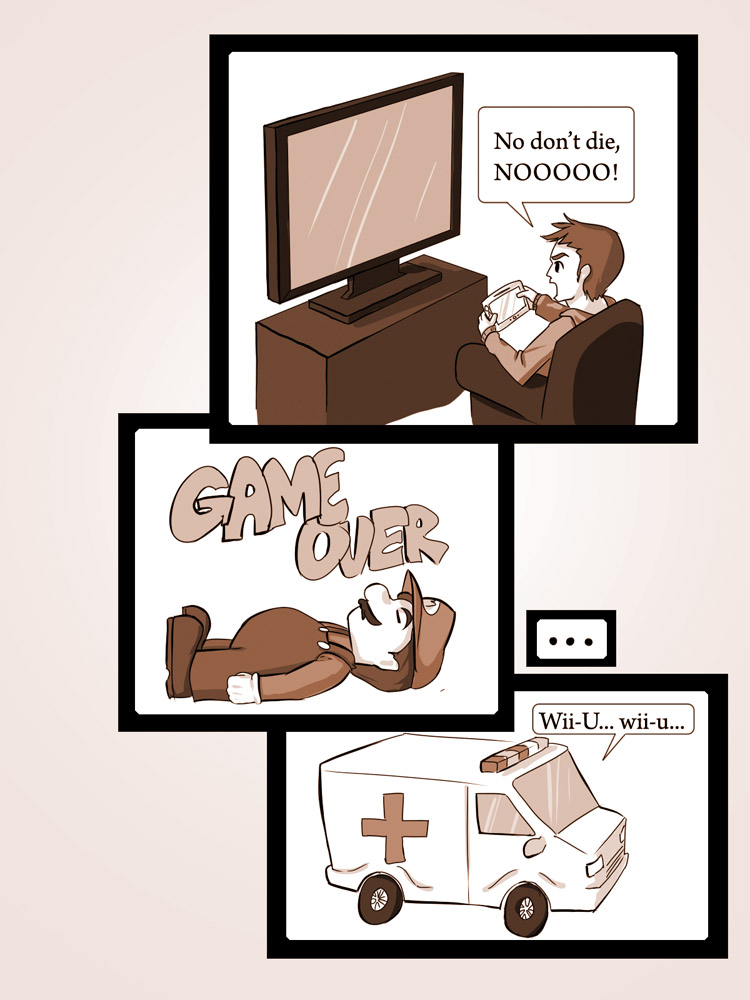

Sophomore Quinn Manely is well aware of Nintendo’s new console, the Wii U. “I saw a lot of commercials, but I was never interested enough to consider buying one,” he says. Manely got a chance to try the new console at Game Center, an arcade located on B Street in downtown San Mateo. “I could test out the system there by playing the game ZombiU with my friend. I used the touchscreen controller while he used the regular Wii remote. It was cool, I guess, but not cool enough to buy. I didn’t think it was that innovative.”
Released November of last year, the Wii U began a new generation of console video games. The console advertises compatibility with old Wii games and accessories, as well as new experiences with its touchscreen controller.
Its first-week sales of 425,000, though, were beaten by competitor Xbox 360 sales, even though the Xbox 360 has been on the market for over seven years. Unlike the success of the Wii in 2006, some consider the Wii U’s future to be bleak in the coming months as a result of the changing video game industry.
With the mention of Wii U, many remember the success of its predecessor. “The Wii launch back then was different than the Wii U launch now,” says sophomore Jake Huth. “Everyone wanted one, and the supply was always low.”
The Wii U launch in November, however, met an entirely different consumer climate upon release. Manely says, “The hype had a lot do with marketing. The name is really just “Wii” with a “U” tacked on. This could be confusing for some people.”
Other Aragon students attribute the notoriety of the original Wii to the new console’s shaky start. “I knew about it, but I didn’t think much of the Wii U as the release date came,” says senior Daniel Goldin. “The [original] Wii was never very impressive to me, and that reputation carries on to the Wii U.”
Still, students who are fans of Nintendo view the Wii U in better light, whether they own one or plan to purchase one in the future. Sophomore Ariane Astarias says, “I’m a long-time owner of Nintendo products, and I like the Wii U. I think the second screen is cool.”
Although the Wii U marked a new console generation months ago, other companies plan to re-enter the video game market with their own innovations. Microsoft is expected to release a new Xbox, code named Durango, by the end of 2013. One expected feature of Durango is Illumiroom, which is a projector that blurs the lines between the TV and the surrounding room using visual lighting effects.
Freshman Jack Loar says, “The Xbox and Playstation already have their own fan bases. They might try new things, but I don’t think a dramatic change between [consecutive consoles] will happen like the change from Gamecube to Wii.” He adds, “Motion controls made the Wii stand out.”
Playstation-creator Sony, meanwhile, has remained silent on its plans for a new console, despite rumors.
Handheld gaming systems have also had an evolution of their own. Recent handhelds include the Nintendo 3DS and the Playstation Vita, neither of which are selling as well as their predecessors, the Nintendo DS and the PSP.
Astarias says, “Over time, I think phones will take over handhelds because they are more portable and all-purpose. You don’t have to bother with things like memory cards or putting cartridges in.” Adds Goldin, “Games on the phone seem very cheap. [People who play on phones] are casual gamers, they want to play a little bit, but not too much.”
All in all, the large amount of new video game gadgets and consoles overwhelm some Aragon students. Loar says, “I think that the cost of video games is getting too high. Keeping up on handhelds and consoles is difficult.”
“Video games are getting expensive because everyone wants something new or better graphics,” says Huth. “But you can’t have everything.”




